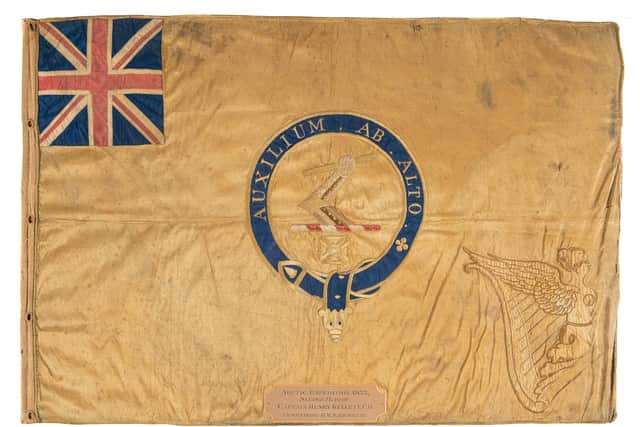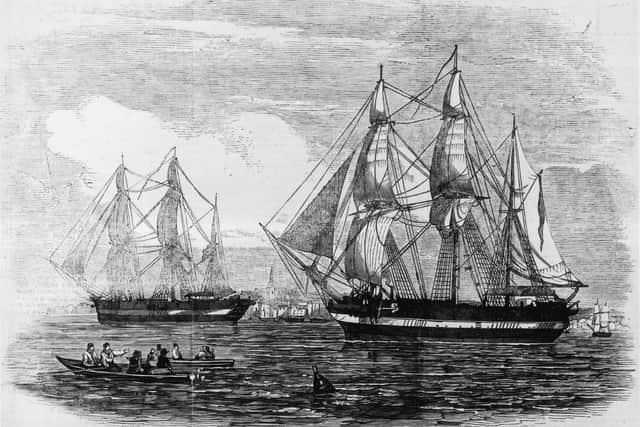National Museum of the Royal Navy leads fight to save sledge flag used in hunt for Franklin's lost expedition
and live on Freeview channel 276
A national appeal has been launched to raise £120,000 to save the flag used in the hunt for Sir John Franklin and the crews of HMS Erebus and HMS Terror. The flag could potentially pass on to a private buyer and away from the museum.
Aside from this example, the museum does not have another example of a sledge flag which symbolises the Royal Navy’s role in the expedition and exploration of Britain’s place in the world. The emblem was used in Captain Henry Kellett’s arctic expeditions and is placed under a temporary export.
NOW READ: Rare letters by Lord Nelson to his lover and more go on display at National Museum of Royal Navy


Advertisement
Hide AdAdvertisement
Hide AdProminent figures have rallied around the cause. TV presenter and author of Erebus, The Story of a Ship, Michael Palin, said: ‘I wish the campaign to save the Kellett polar sledge flag all the very best.
‘It is an important reminder that men were prepared to put their own lives at risk to try and locate any evidence of the fate of Franklin’s expedition.’ Mr Palin added the flag is an ‘emblem of survival and heroism in the most appalling circumstances’ and ‘an inspirational piece of naval history’ which should be kept for all to see.
Historian and broadcaster Dan Snow said: ‘This flag is less instantly familiar than a mighty battle ensign of a ship of the line but it is just as important to our naval story. It’s a flag carried by brave men who put their duty to others above their own self-interest.
‘It's a flag that's been taken to some of the most remote places on earth, fluttering away above a hardy little team, reminding those men that no matter how lonely they felt they were part of something much bigger. This flag is a part of our national story and it should be here for us all to learn from and be inspired by.’


Advertisement
Hide AdAdvertisement
Hide AdThe banner was flown during the third of a series of expeditions between 1852 and 1854. Military personnel travelled from the eastern side of Canada to look for survivors, or evidence of bodies.
Kellett was captain of HMS Resolute, the ship whose own fate strengthened the bond between Britain and the United States. The mystery surrounding the fate of the Franklin expedition and the 129 crew ignited public debate for decades until HMS Erebus and HMS Terror were found in 2014 and 2016 respectively.
The mission holds a symbolic place within Arctic exploration as it lead to the successful mapping of the Canadian archipelago and northern mainland coastline. Speaking when the export bar was put on the flag, Arts Minister Lord Parkinson of Whitley Bay said: ‘ Its cultural and historical significance should be a driving force to keep it in the country.
‘I hope a buyer comes forward for this treasure soon.’ Plans are in place for the flag to be displayed at Portsmouth Historic Dockyard later this year, alongside objects from both associated ships.
Advertisement
Hide AdAdvertisement
Hide AdThere are two weeks left to raise £120k to save the flag. The Art Fund provided a grant of £40k, alongside other private donors.
The National Museum of the Royal Navy said a remaining figure of £30k is needed. Donations can be made here.